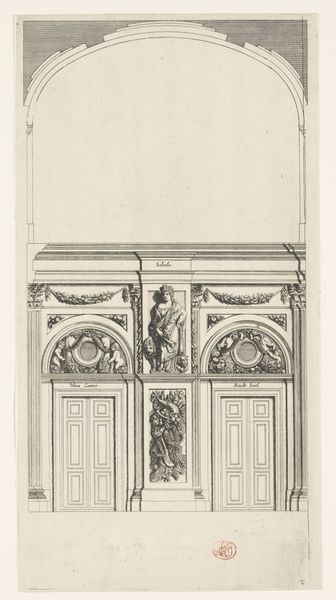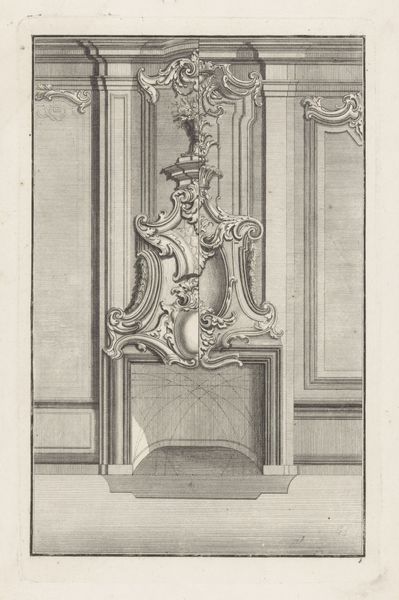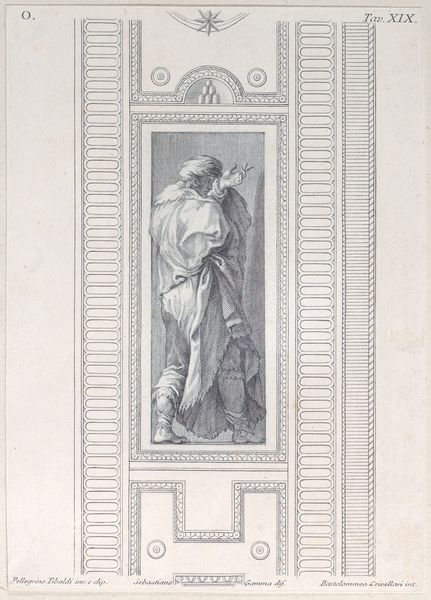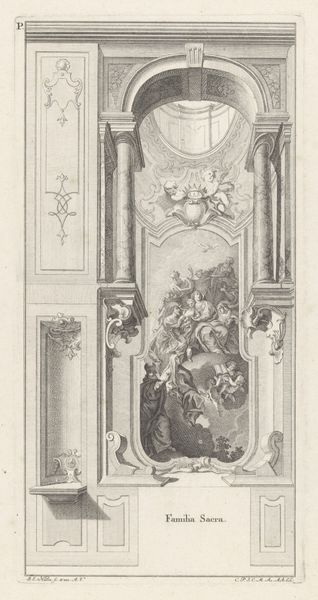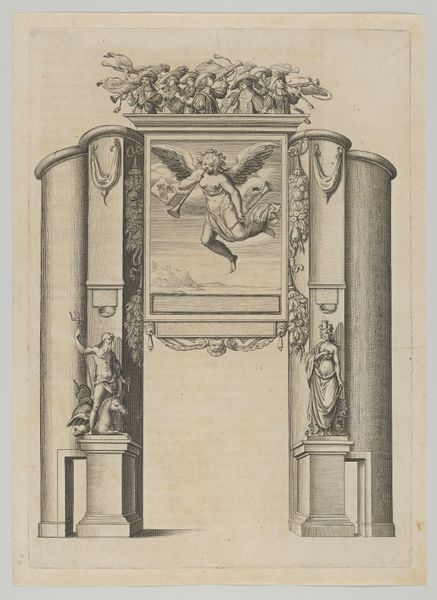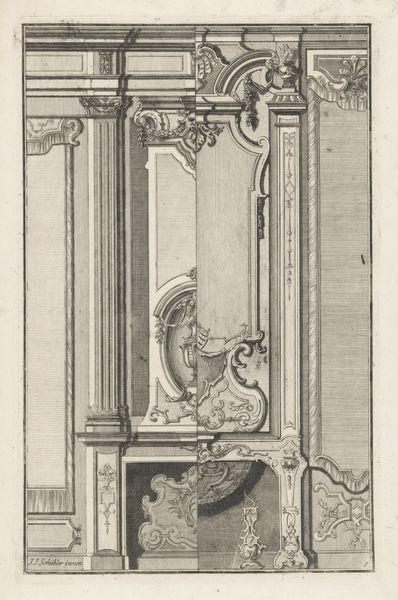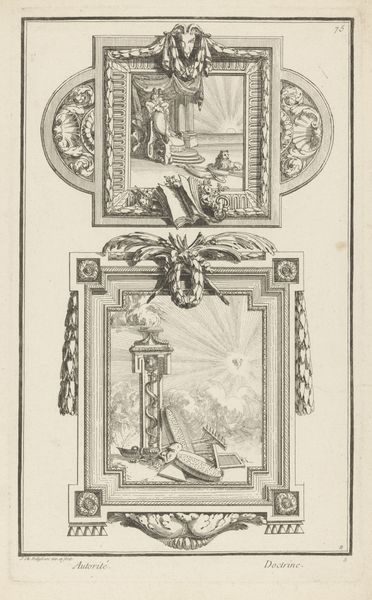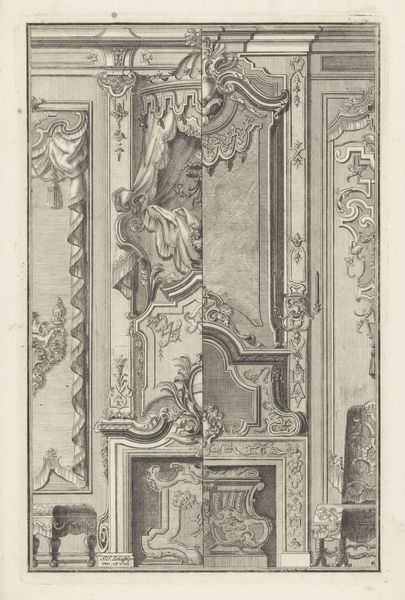
drawing, print, engraving
#
drawing
#
baroque
# print
#
classical-realism
#
figuration
#
line
#
history-painting
#
academic-art
#
nude
#
engraving
Dimensions: Sheet (Trimmed): 8 1/16 × 5 11/16 in. (20.4 × 14.5 cm)
Copyright: Public Domain
Curator: What a strikingly stoic composition. Two figures supporting...is that an orb above them? Almost architectural in its stark presentation. Editor: Indeed. This engraving, Plate 17: two nude figures wearing veils, crafted in 1756, showcases the artistry of Bartolomeo Crivellari, pulling from a design by Pellegrino Tibaldi. It's currently housed at the Metropolitan Museum of Art. We should also consider how the clean, almost academic lines play with notions of masculinity and vulnerability in the classical world. The veils, partially concealing, add another layer of ambiguity. Curator: They immediately recall classical statuary and the weight of history those images carry. These figures are presented not as individuals, but as structural, almost allegorical supports. Do the veils denote modesty, perhaps a covering of their shame or burden? What symbolic role do you think veiling is enacting here? Editor: The veils may play with power dynamics –who is being veiled from whom and why. The hyper-masculine musculature and the veiled faces create an interesting tension. Are we seeing figures forced to bear weight against their will? Are they complicit? The piece could be understood within debates surrounding the burden placed upon marginalized bodies under structures of power that are often veiled in their operations. Curator: That adds a potent layer of meaning, thinking about veiled power structures! Considering the prevalence of Greco-Roman imagery during this period, it makes one consider which classical ideals or narratives Crivellari may have been trying to subvert, challenge, or otherwise reclaim through such reinterpretation. It could challenge then, current social and gender norms through visual cues. Editor: Absolutely. The piece is rife with questions about the role of art in visualizing and, indeed, in possibly obscuring complex sociopolitical dynamics. To me, the print is a constant prompt to reflect critically upon representations and what truths are hidden behind facades. Curator: And how those images persist and carry different connotations and symbolisms as time progresses. It almost makes you question the true essence of the artist’s vision! Editor: It is quite haunting to know it may carry alternate meanings for viewers today.
Comments
No comments
Be the first to comment and join the conversation on the ultimate creative platform.




